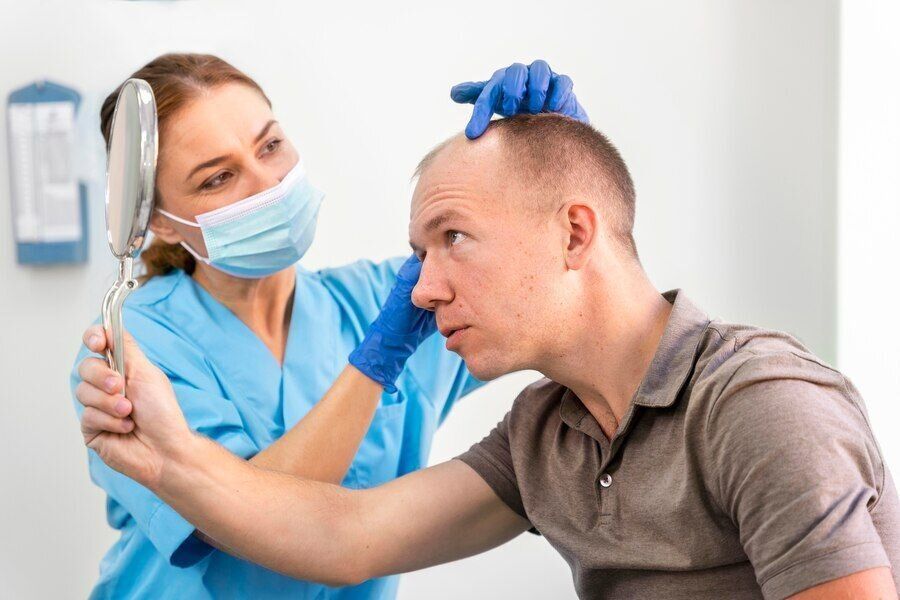Alopecia is a condition that impacts millions of people globally, leading to hair loss and significant emotional distress. Whether caused by genetics, autoimmune diseases, or environmental factors, alopecia often leaves individuals searching for effective solutions. Among the innovative treatments available, scalp micropigmentation (SMP) stands out as a non-invasive, cost-effective, and highly aesthetic approach. In this blog, we’ll explore how scalp micropigmentation works, its benefits, and why it has become a game-changer for those dealing with alopecia.
What Is Scalp Micropigmentation?
Scalp micropigmentation is a cosmetic procedure that replicates the appearance of a natural hairline and hair density. By applying specialized pigments to the scalp using micro-needles, SMP creates the illusion of tiny hair follicles, giving the impression of a closely shaved head or a fuller scalp.
Unlike hair transplant surgery, which involves the grafting of real hair, SMP is purely aesthetic. It does not promote hair regrowth but provides a realistic solution for those who have lost hair permanently.
Understanding Alopecia
Alopecia refers to various forms of hair loss, including:
- Alopecia Areata: An autoimmune condition where the immune system attacks hair follicles, resulting in patchy baldness.
- Androgenetic Alopecia: Commonly known as male or female pattern baldness, caused by genetics and hormonal changes.
- Alopecia Totalis: Complete loss of scalp hair.
- Alopecia Universalis: Loss of all body hair.
Other triggers for alopecia include stress, nutrient deficiencies, and medical conditions like thyroid disorders. No matter the type or cause, hair loss can severely impact self-esteem and social interactions.
How Scalp Micropigmentation Helps with Alopecia
SMP is versatile and caters to the needs of individuals facing various types of alopecia. Here’s how it can help:
- Restores Confidence
For many, hair loss leads to self-consciousness. SMP provides an immediate transformation, allowing individuals to regain confidence in their appearance. - Creates a Natural Look
Using advanced pigmentation techniques, SMP professionals can mimic the appearance of natural hair follicles. The results are so realistic that it’s difficult to distinguish between real and pigmented hair. - Customizable for Every Individual
Each SMP treatment is tailored to the individual’s needs, considering factors like skin tone, hair color, and alopecia type. - Low Maintenance
Unlike wigs or hairpieces, SMP requires minimal upkeep. Once the treatment is complete, regular touch-ups every few years are all that’s needed. - Works for Severe Cases
For individuals with conditions like alopecia totalis or universalis, SMP can recreate the appearance of a fully shaved scalp, offering a uniform and natural look.
The Scalp Micropigmentation Process
SMP is a multi-step procedure carried out by trained professionals. Here’s what to expect:
- Consultation
The first step is an in-depth consultation to assess the extent of hair loss and discuss your desired outcome. - Color Matching
Specialists select pigments that match your natural hair color and skin tone, ensuring seamless results. - Pigmentation Application
Using micro-needles, the technician applies pigments to the scalp, layer by layer, to create the appearance of hair follicles. - Healing and Touch-Ups
The scalp requires time to heal after each session, typically 7–10 days. Multiple sessions may be needed for optimal results.
Benefits of Scalp Micropigmentation Over Other Treatments
SMP is a popular choice for alopecia due to its numerous advantages:
- Non-Invasive
Unlike surgical hair restoration, SMP doesn’t involve incisions or grafting. It’s a quick, minimally painful procedure. - Cost-Effective
SMP is more affordable than hair transplants or ongoing costs of wigs and topical treatments. - Immediate Results
While hair transplants can take months to show visible outcomes, SMP provides instant improvements. - Long-Lasting
The results of SMP last several years with proper care, making it a durable solution. - No Side Effects
When performed by a skilled professional, SMP has minimal risks and no long-term side effects.
Who Should Consider SMP for Alopecia?
SMP is suitable for:
- Individuals with alopecia areata, totalis, or universalis.
- Men and women with thinning hair or pattern baldness.
- People who want to conceal scars from hair transplant surgery.
- Anyone seeking a low-maintenance solution to hair loss.
Choosing the Right SMP Provider
The success of scalp micropigmentation largely depends on the expertise of the practitioner. When selecting a provider, consider the following:
- Experience: Choose a specialist with a proven track record in SMP for alopecia.
- Portfolio: Request before-and-after photos of previous clients.
- Certifications: Ensure the provider has undergone professional SMP training.
- Hygiene Standards: The clinic should follow strict hygiene and safety protocols.
Aftercare Tips for Long-Lasting Results
To maintain the appearance and longevity of your SMP treatment:
- Avoid direct sun exposure for the first few weeks.
- Refrain from swimming, saunas, or intense workouts during the healing phase.
- Use gentle, sulfate-free shampoos to cleanse your scalp.
- Schedule touch-ups every 3–5 years to keep the pigments fresh.
Transforming Lives with Scalp Micropigmentation
For individuals living with alopecia, scalp micropigmentation offers more than just an aesthetic solution—it’s a chance to reclaim their identity and confidence. With its ability to replicate natural hair follicles and provide an elegant, polished look, SMP has become a preferred choice for many.
Whether you’re just starting to explore your options or ready to embrace this innovative treatment, Scalp Micropigmentation for Alopecia can be the perfect answer to hair loss challenges.
Ready to take the first step? Contact a trusted SMP provider today and begin your journey toward a confident, empowered version of yourself.
